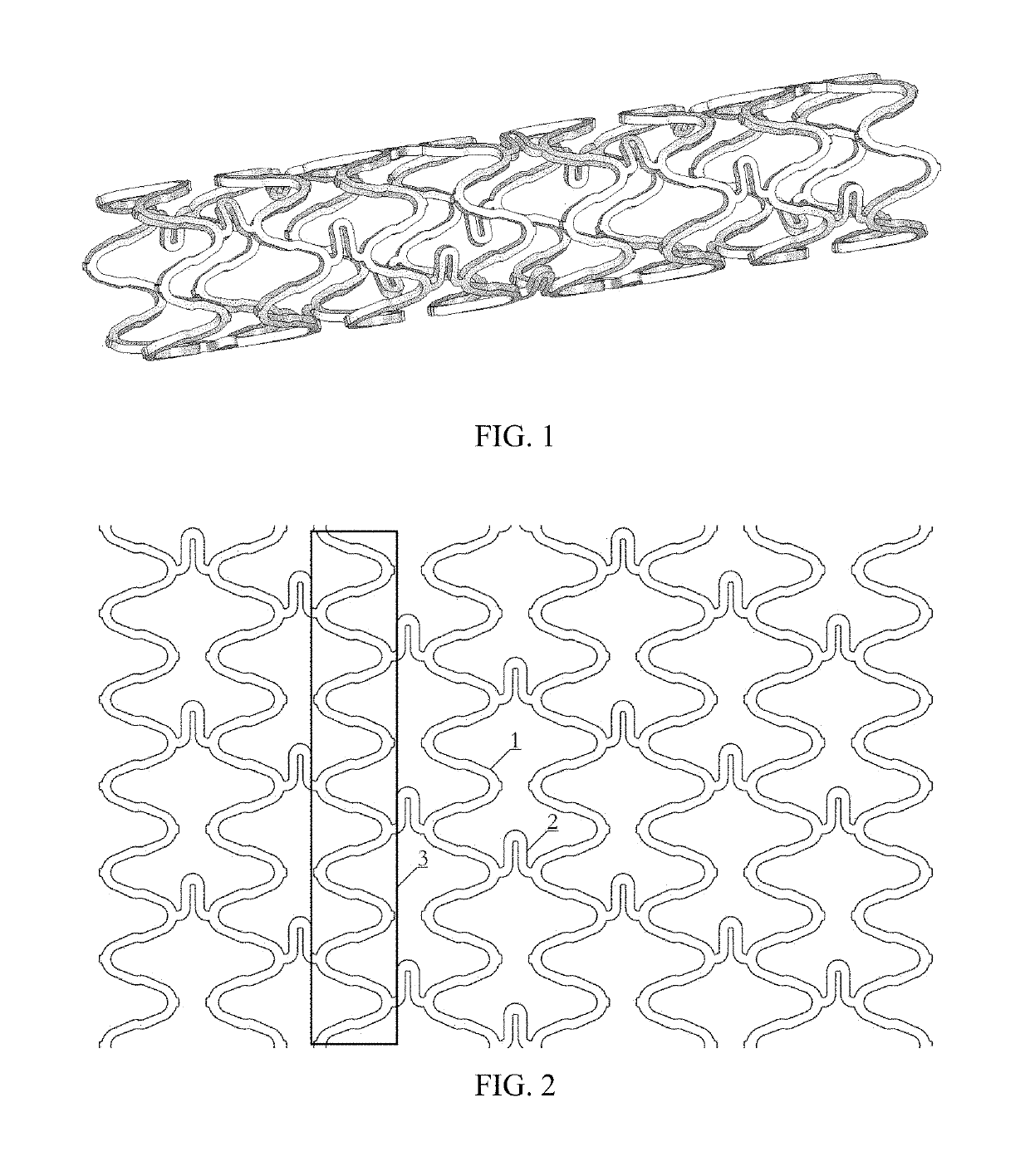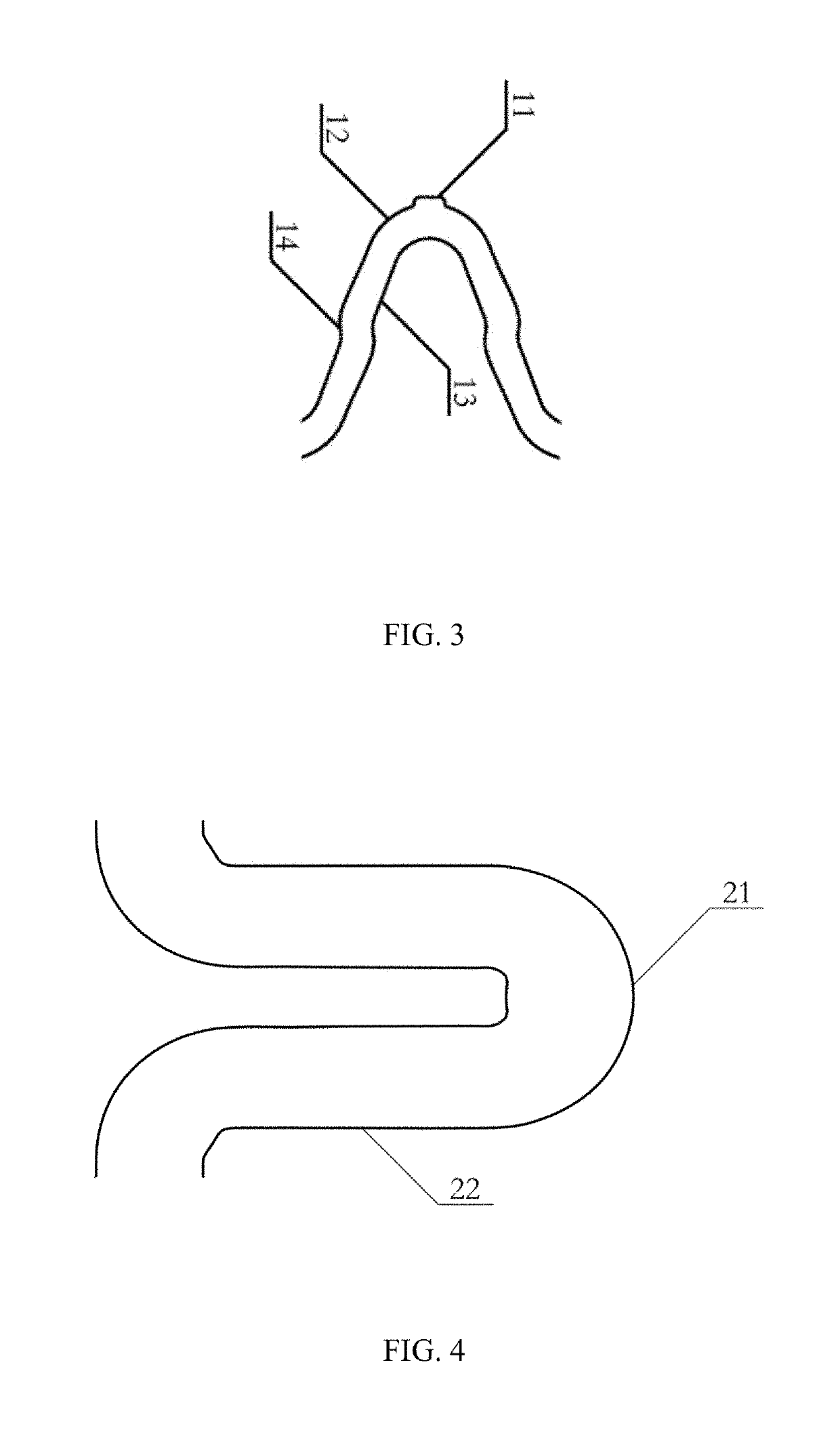Biodegradable metallic vascular stent and application thereof
a vascular stent, biodegradable technology, applied in the field of biodegradable vascular stents, can solve the problems of limited use, thrombosis, long-term endothelial dysfunction, etc., and achieve the effects of improving mechanical properties, reducing maximum stress, and effective utilization of spa
- Summary
- Abstract
- Description
- Claims
- Application Information
AI Technical Summary
Benefits of technology
Problems solved by technology
Method used
Image
Examples
embodiment 1
[0032]The present disclosure provides an example embodiment 1 of a biodegradable stent shown in FIG. 1, comprising a base body which is tubular with a lumen along a longitudinal axis, wherein the base body has a plurality of circumferential support structures 3 which are successively positioned along the longitudinal axis and are each composed of a sequence of repeat units 1; and each of the circumferential support structures has two or more connectors 2, wherein two adjacent circumferential support structures 3 are joined together by at least two of the connector 2, and each of the connectors 2 is attached to one of arched elements 12 of the two adjacent circumferential support structures 3 to be connected.
[0033]According to embodiment 1, the adjacent circumferential support structures 3 are specularly symmetric.
[0034]FIG. 4 shows the connectors 2, which are “n” shaped and comprise curved elements 21 and two straight elements 22; outer contours of curved element 21 are smooth curve...
embodiment 2
[0041]In an alternative embodiment 2 of the present invention, the quantity of the repeat units 1 in each of the circumferential support structures 3 is between 4 and 8; the connectors 2 are spiral distribution in the longitudinal direction; the quantity of the connectors 2 between the two circumferential support structures 3 to be connected is between 2 and 4. Other composition and connection are same as the embodiment 1. By the means of increasing or decreasing the quantity of repeat units, the out diameter of stent can be resized in a large scale.
embodiment 3
[0042]In an alternative embodiment 3 of the present invention, the height of the bump elements 11 is between 0.01 mm and 0.06 mm; the major axis of the arched elements 12 is between 0.15 mm and 0.35 mm, the minor axis of the arched elements 12 is between 0.10 mm and 0.30 mm, the width of the strut is between 0.10 mm and 0.20 mm. Other composition and connection are same as the embodiment 1.
PUM
| Property | Measurement | Unit |
|---|---|---|
| length | aaaaa | aaaaa |
| length | aaaaa | aaaaa |
| length | aaaaa | aaaaa |
Abstract
Description
Claims
Application Information
 Login to View More
Login to View More - R&D
- Intellectual Property
- Life Sciences
- Materials
- Tech Scout
- Unparalleled Data Quality
- Higher Quality Content
- 60% Fewer Hallucinations
Browse by: Latest US Patents, China's latest patents, Technical Efficacy Thesaurus, Application Domain, Technology Topic, Popular Technical Reports.
© 2025 PatSnap. All rights reserved.Legal|Privacy policy|Modern Slavery Act Transparency Statement|Sitemap|About US| Contact US: help@patsnap.com


